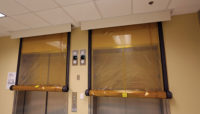Over the past two months, this column has focused on commissioning design reviews. This month, I’ll examine submittal reviews early in the construction phase.
The commissioning professional reviews submittals related to the commissioned equipment and systems in parallel with the design team and then submits comments to them. The design team chooses to include, or not, some variation of the commissioning professional’s comments in the formal stamped submittals the design team returns to the contractors.
This column is about the design engineers’ disposition of the submittals after they have been reviewed. A typical stamped submittal will have one of the following options checked: approved, approved as noted, revise and resubmit, or reject.
We’ve noted a propensity on the part of design engineers to over-use the “approved as noted” disposition. Although not universal, this is a trend in the wrong direction when it comes to commissioning efficiency and documentation, both of which can impact a project’s costs and schedule as well as the owner’s ongoing operations.
Approved as noted submittals are returned to the construction team with redlined markups of the design team’s comments and modification requirements. It’s expected that the contractor will find and implement all the required changes prior to ordering the equipment. If it is a small submittal (i.e., fewer than five to 10 pages), and there are only minor redlines that do not impact the equipment’s efficiency, integration with other equipment, or ongoing operations, this can be fine and is the scenario for which the approved as noted option is intended.
However, if the design team distributes redline markups throughout a large submittal, some may be missed by the submitting contractor or general contractor; critical comments related to integration with other equipment and/or the BAS may not be addressed, as the responsibility for such integration is typically murky within most construction teams; and the approved-as-noted, heavily redlined submittal will be the only record of the submittal passed to the owner at project closeout. This is a messy and often hard-to-interpret document for future building operators.
The same messy documents are also the source of acceptance criteria for commissioning. If there are discrepancies during functional testing, the commissioning process will need to pause while everyone literally “gets on the same page” regarding the project’s requirements. Unfortunately, that is a bad time to discover the contractor or commissioning professional did not catch all the redline modifications.
I recommend any submittals with markups related to the following be returned to the construction team as revise and resubmit: integration/coordination with other equipment or systems; control system points; and sequences of operation.
Depending on the nature of the comments, the design team could allow the equipment to be ordered prior to the resubmittal (at the contractor’s risk) as long as the revised submittal is received within x days of the revise and resubmit disposition.





